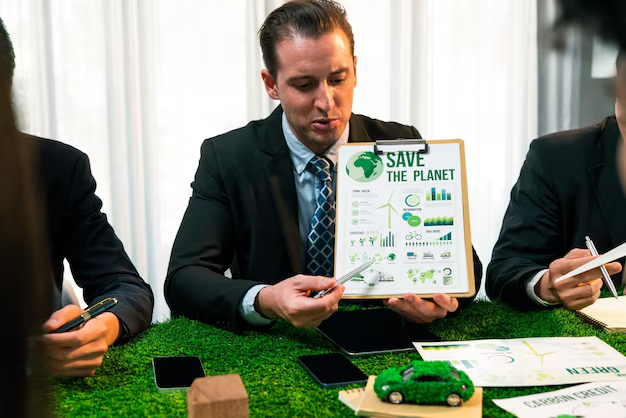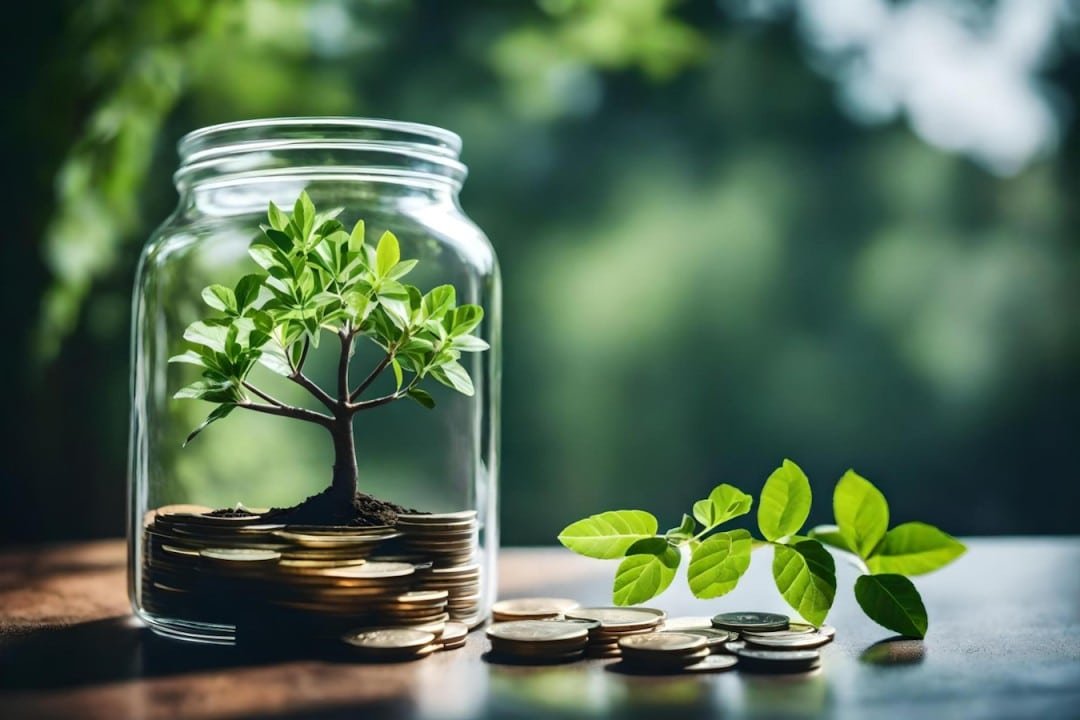Sustainability has become a core principle in many industries, with environmental awareness and action gaining significant momentum globally. As individuals and organizations seek to reduce their carbon footprint and promote eco-friendly practices, financing solutions have evolved to align with these objectives. One such solution is a green loan—a specialized Green Loan financial product designed to support environmentally sustainable projects. In this article, we will explore what green loans are, how they work, and how they can benefit your sustainable projects.
Key Takeaways
- Green loans are financial products designed to fund environmentally sustainable projects, such as renewable energy installations and energy-efficient buildings.
- These loans often come with lower interest rates and other financial incentives to promote eco-friendly investments.
- Green loans provide a unique financing option for projects that may not be eligible for traditional loans, helping individuals and businesses access capital for sustainability goals.
- The benefits of green loans include long-term cost savings, enhanced brand reputation, and positive environmental impact.
- To apply for a green loan, borrowers must demonstrate that their projects meet environmental criteria and often undergo a certification process.
What Is a Green Loan?
A green loan is a type of financing designed to fund projects that have positive environmental impacts. These loans are typically offered at competitive Green Loan interest rates to individuals, businesses, and organizations aiming to implement environmentally sustainable practices, such as renewable energy installations, energy-efficient buildings, or waste reduction initiatives.
Green loans are part of a larger category of green financing, which includes various financial products such as green bonds, green mortgages, and sustainability-linked loans. These loans are part of the growing trend of “green banking,” where financial institutions offer loan products specifically designed to support projects that contribute to environmental preservation and sustainability.
Unlike traditional loans, which focus solely on financial factors, green loans have a dual objective: to fund a project and ensure that the project aligns with strict environmental standards.
How Does a Green Loan Work?

Green loans work similarly to traditional loans, with the Green Loan primary difference being the requirement that the funds must be used for projects that meet certain environmental criteria. These loans are typically provided by banks, credit unions, and other financial institutions that offer specialized lending products to support sustainable goals.
When applying for a green loan, borrowers must demonstrate that the project they wish to fund adheres to recognized environmental standards. These criteria might include reducing carbon emissions, improving energy efficiency, utilizing renewable energy sources, or adopting environmentally friendly construction practices.
To ensure compliance with these standards, green loans are often subject to a certification process. Third-party organizations, such as the Climate Bonds Initiative or Green Building Councils, may certify that the project meets sustainability requirements before the loan is granted.
Once approved, borrowers typically repay the loan in installments, just as they would with any other loan. The interest rates on green loans can vary depending on factors such as the lender, the project type, and the loan amount. However, many green loans offer favorable terms, including lower interest rates, to incentivize the adoption of sustainable practices.
Why are green loans important?
Developing countries currently account for just $1.6 billion of the estimated $33 billion in outstanding green loans. But the market is growing rapidly, outpacing the growth of the green-bond market in the near term. Green loans contribute to aligning lending and environmental objectives. Green Loans help borrowers communicate the greening of their operations and supply chain. Considering the higher transaction costs of bond issuance, the minimum bond size to be tradeable, and the fact that only bonds above a certain size are tracked by various indices, potential issuers in emerging markets with small green portfolios may feel inclined to receive a green loan instead of issuing a green bond.
What Types of Projects Can Be Funded by Green Loans?
Green loans can be used to finance a wide range of projects aimed at improving environmental sustainability. Some of the most common types of projects eligible for green loans include:
Renewable Energy Projects:
Green loans can be used to fund renewable energy systems such as solar panels, wind turbines, and geothermal energy installations. These projects help reduce reliance on fossil fuels and contribute to a cleaner, more sustainable energy future.
Energy-Efficient Buildings:
Green loans can be used to finance energy-efficient home or commercial building projects. This includes building new energy-efficient structures or retrofitting existing ones to meet higher energy performance standards.
Green Construction Projects:
Green loans can be used to finance the construction of eco-friendly buildings that meet sustainable design standards, such as those outlined by LEED (Leadership in Energy and Environmental Design) or similar certification programs.
Electric Vehicles and Charging Stations:
Green loans can be used to purchase electric vehicles (EVs) or install charging stations for EVs. These projects reduce greenhouse gas emissions and promote clean transportation alternatives.
Waste Reduction and Recycling:
Projects that aim to reduce waste and improve recycling efforts, such as the installation of composting systems or zero-waste facilities, can also qualify for green loans.
Water Conservation:
Green loans can finance projects aimed at improving water use efficiency, such as rainwater harvesting systems, irrigation upgrades, or water-efficient plumbing.
Sustainable Agriculture:
Green loans can support sustainable farming practices that promote soil health, reduce chemical use, and conserve natural resources.
Eco-Friendly Products and Innovations:
Green loans can also support the development and production of environmentally friendly products, such as biodegradable packaging or low-impact manufacturing processes.
Benefits of Green Loans for Sustainable Projects
There are several advantages to using a green loan for sustainable projects, whether you’re an individual looking to make eco-friendly upgrades to your home or a business seeking to implement large-scale sustainability initiatives. Here are some key benefits:
- Lower Interest Rates: Green loans often come with lower interest rates than traditional loans. This is because financial institutions offer these loans as an incentive to promote sustainable practices. In many cases, borrowers can secure favorable terms as part of their commitment to a greener future.
- Financial Incentives and Rebates: Many countries and regions offer financial incentives or tax rebates to individuals and businesses that invest in sustainable projects. Green loans make it easier to access these incentives and may be structured to align with government grants or subsidies.
- Access to Specialized Financing: Green loans provide access to financing that is tailored to support environmental goals. This means borrowers can fund projects that would otherwise be challenging to finance through conventional lending options. Whether it’s installing solar panels or retrofitting a building for energy efficiency, green loans cater to specific needs in the sustainability sector.
- Positive Environmental Impact: The most significant benefit of a green loan is the positive environmental impact it creates. Whether you’re reducing energy consumption, cutting carbon emissions, or supporting eco-friendly innovation, green loans play a vital role in contributing to a more sustainable world.
- Enhanced Reputation and Brand Image: For businesses, financing sustainable projects through green loans can enhance their reputation and brand image. Consumers and investors are increasingly prioritizing environmental responsibility, and companies that invest in green initiatives are often viewed more favorably.
- Long-Term Cost Savings: While some green projects may require a higher upfront investment, many offer long-term savings. For example, energy-efficient buildings reduce utility costs over time, and renewable energy projects can generate savings by reducing reliance on traditional energy sources.
- Increased Access to Capital: By taking advantage of green loans, businesses and individuals may gain access to additional capital or financing options for their sustainability initiatives. This can be particularly useful for those with limited access to traditional financing due to the nature of the project.
What makes a loan a green loan?

To be called a green loan, a loan should be structured in alignment to the Green Loan Principles, which provide an international standard based on the following four core components:
- Use of Proceeds: Designated Green Projects should provide clear environmental benefits, which will be assessed, measured, and reported by the borrower.
- Process for Project Evaluation and Selection: The borrower of a green loan should clearly communicate how it is organized to assess and select projects that will receive loan proceeds. In addition, the borrower explains how it will manage environmental and social risk of eligible projects.
- Management of Proceeds: The proceeds of a green loan should be credited to a dedicated account or tracked by the borrower to maintain transparency and promote the integrity of the product.
- Reporting: The principles recommend the use of qualitative performance indicators and, where feasible, quantitative performance measures (for example, energy capacity, electricity generation, greenhouse gas emissions reduced/avoided, etc.
Green Loan Principles (GLPs)
The GLPs are a framework that helps lenders and borrowers understand what can be considered a green loan. The four principles are:
Use of Proceeds
The first principle relates to how borrowers can use the loan funds. Borrowers should demonstrate the project to be funded has clear environmental benefits, such as conservation or climate change mitigation.6
Process for Project Evaluation and Selection
Under the second GLP, borrowers should communicate the environmental objectives of the green project they wish to have funded. Borrowers are also encouraged to identify and communicate any potential risks and mitigations for negative environmental or social impacts.6
Management of Proceeds
Once a green loan is funded, borrowers are expected to track the use of the proceeds and maintain transparency in that process.6
Reporting
In accordance with the fourth GLP, borrowers are expected to report on the use of the loan proceeds and the actual impact of their projects’ goals. The reported information is typically reviewed annually until the loan is fully drawn.
Examples of Green Loans
The definition of a green project can vary. These are some examples:
Personal Green Loans
Personal green loans can fund projects such as:
- Eco-friendly home remodeling
- Residential solar panel installation
- Purchase of an electric vehicle
Business Green Loans
Businesses may seek green loans for purposes such as:
- Developing green, LEED-certified buildings7
- Purchasing green tech, such as electric vehicles or alternative energy
- Restoration of natural habitats
Are There Any Special Requirements to Get a Green Loan?
Borrowers must adhere to the green loan principles (GLPs) to secure a green loan. That includes using the proceeds to fund a green project and meeting specific reporting requirements.
How Is a Green Loan Different From a Traditional Loan?
A traditional loan, such as a business or personal loan, typically has more open-ended guidelines for how the funds may be used. Lenders offer green loans specifically to fund environmentally focused projects.
Is a Green Loan the Same as an ESG Loan?

ESG loans are a broader category than green loans. ESG loans typically do not have limitations on the use of the proceeds. Instead, this type of loan incentivizes borrowers to improve their ESG performance. If borrowers demonstrate improvement on certain ESG metrics, they can potentially reduce the price of the loan.8
What Are Green Bonds?
Green bonds and green loans can serve similar purposes, but green bonds tend to be larger and have higher transaction costs. Green loans are executed privately, while green bonds may be executed privately or placed on an exchange.
Overview of Eco-Friendly Loan Products
Several financial products are designed to support green initiatives. These loans and funding options make it easier for individuals and businesses to invest in sustainable practices, often with benefits like lower interest rates, tax incentives, or subsidies. Some common eco-friendly loan products include:
Green Home Loans :
These loans support the purchase or construction of energy-efficient homes that use sustainable materials and technologies.
Solar Loans :
Specifically aimed at financing solar energy installations, these loans cover the costs of purchasing and setting up solar panels for homes or businesses.
Electric Vehicle Loans :
To encourage the use of clean transportation, some banks offer loans specifically for purchasing electric vehicles (EVs).
SME Green Financing :
Small and medium enterprises (SMEs) can obtain loans to upgrade machinery, adopt renewable energy, or improve energy efficiency in their operations.
These products not only help in lowering energy costs but also contribute to long-term sustainability goals.
What Is Greenwashing?
Greenwashing refers to the deceptive practice of promoting a project as green when it is not. A company may be accused of greenwashing if it does not use the proceeds of a green loan to fund an environmentally friendly project or if it does not clearly report on the funded project’s environmental impact
Green loans: Financing a greener earth
While all types of loans may be called green, considering that’s the colour of money, green loans are a specific type of loan. They are integral to green financing – financing toward sustainable development. The global green financing market was valued at USD 4.18 trillion in 2023 and is expected to grow at 21.25% in the next decade.
Green loans are powerful instruments that can have financial and environmental benefits, and thanks to government push and strong investor sentiment, such loans are growing in availability and popularity.
In this article, we’ll cover green loans, exploring their benefits and zeroing in on how the real estate sector, in particular, can leverage them to make sustainable buildings.
What are the requirements for green loans?
According to the Green Loan Principles (GLP) of the International Capital Market Association (ICMA), green loans can finance or refinance new and existing green projects in part or fully. The exact requirements vary by loan type/category and lender.
Some green loans may be available to specific sectors, such as transportation or construction. However, many loans have flexible requirements and can fund various green projects.
Normally, a borrower must satisfy the lender about the project’s financial soundness and how it will positively impact the environment. The former requirement is just as important because green loans are loans. So lenders want to ensure that the borrower doesn’t default and that the project merits the loan based on its potential financial and environmental outcome.
Many lenders also require reports on the project’s progress to ensure the funds serve its intended purpose. GLP states that borrowers should be required to report annually and provide quantitative and qualitative performance indicators for the funded projects.
Green bonds vs. green loans
Green bonds should not be confused with green loans. While both are financial instruments for funding environmentally friendly projects, they differ in scale and operation.
Green bonds are fixed-income securities issued by corporations, municipalities, or governments and sold to investors to raise capital for environmental projects. They may be listed on a public exchange or sold privately to institutional investors.
Money from these bonds may help banks and other lenders issue green loans to businesses and individuals. Unlike green bonds, green loans involve actual borrowers who will use the money for green projects. So, there’s direct engagement with borrowers.
Both green bonds and loans essentially offer financial returns for issuing institutions, albeit accompanied by environmental benefits. So, it’s safe to say that green bonds and green loans are complementary financial instruments that help power sustainability initiatives; they help redirect capital toward projects that can mitigate climate change.
Green bonds have become a sought-after financial offering, which means more green loans in the future. The European Union (EU) dominates green bond issuance. Its standardised green bonds have seen impressive growth of 50% year-on-year since 2015. In 2022, they amounted to 1.7% of the total GDP (Euro 266 billion).
Seize the opportunity!
Green loans can make a big difference if used properly. While they’re a financial instrument for profit, their impact on the environment makes them a worthy option. For small businesses and corporations, green loans can power initiatives that reduce GHG emissions and promote sustainability. Plenty of green loans are readily available in Denmark, other Nordic countries, and the EU. So take advantage of them to make your real estate portfolios more eco-friendly!
Also Read : What Is A Green Loans And How Does It Support Sustainable Projects?
Conclusion
A green loan is an excellent way to finance projects that contribute to sustainability and environmental preservation. Whether you are an individual looking to reduce your energy consumption or a business seeking to enhance your eco-friendly operations, green loans offer a range of benefits, including favorable interest rates, long-term cost savings, and the opportunity to make a positive environmental impact. By investing in green projects, you are not only contributing to a cleaner planet but also positioning yourself or your business as a leader in the growing movement towards sustainability.
FAQs
What is the difference between a green loan and a regular loan?
A green loan is specifically designed to finance projects that have environmental benefits, such as energy efficiency improvements or renewable energy installations. Regular loans, on the other hand, are not restricted to specific types of projects and can be used for general purposes.
How can I apply for a green loan?
To apply for a green loan, you typically need to work with a bank or financial institution that offers green financing options. You’ll need to submit a project proposal that demonstrates how the project aligns with sustainability criteria, and the lender will evaluate the environmental impact of your project before approving the loan.
Are green loans available for individuals?
Yes, individuals can apply for green loans to finance projects such as home energy efficiency upgrades, solar panel installations, or electric vehicle purchases. Many banks and lending institutions offer green loan options for both individuals and businesses.
What are the eligibility requirements for green loans?
Eligibility for green loans depends on the specific project and the lender’s criteria. Generally, your project must have clear environmental benefits, such as reducing carbon emissions, conserving energy, or using renewable resources.
Do green loans have higher interest rates?
No, green loans typically offer lower interest rates than traditional loans to encourage the adoption of sustainable practices. Some financial institutions also offer additional incentives or rebates for green projects.
What kinds of projects qualify for green loans?
Green loans can fund a wide variety of projects, including renewable energy installations, energy-efficient buildings, water conservation efforts, and sustainable transportation options such as electric vehicles and charging stations.
Are there any tax benefits associated with green loans?
In some countries, green projects financed through green loans may qualify for tax credits, rebates, or other government incentives. It’s important to check with local authorities to understand what benefits may be available.





